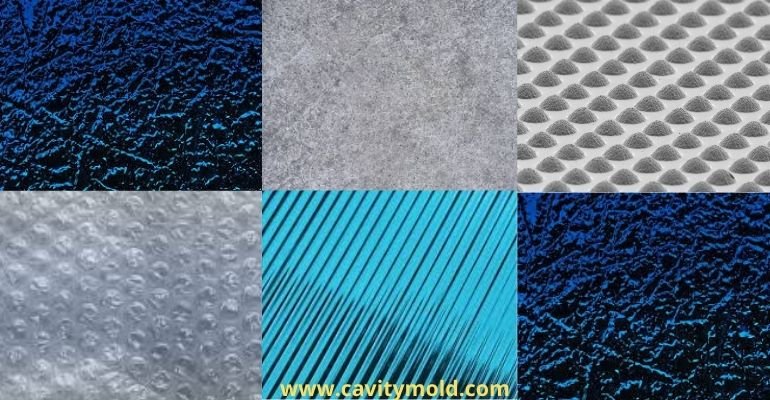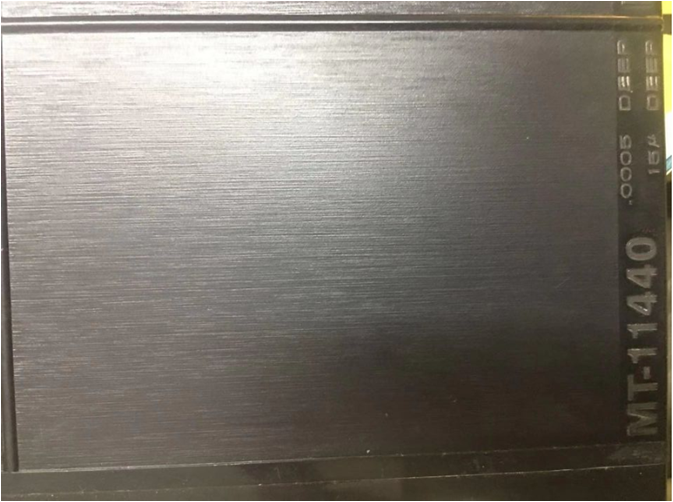Plastic Mold Texture: Complete Guide to Injection Mold Surface Finishes and Their Benefits
Plastic parts come with a wide variety of appearance and texture options. Among these, plastic mold texture plays a crucial role in defining the final look, feel, and functionality of the product. Mold surface textures are increasingly popular because they can greatly enhance aesthetics and performance.
Understanding what plastic mold texture is, how the texturing process works, and its applications will help you make better decisions when choosing mold texturing companies and specifying surface finishes for your plastic injection molded parts.
What is Plastic Mold Texture?
Texture, often called graining, refers to the process of creating patterns on the mold surface that transfer onto the plastic parts. Mold texturing is a cost-effective method to add complex and varied surface finishes to plastic components.
Through this technique, manufacturers can produce diverse textures such as:
- Satin Patterns
- Geometric Patterns
- Wood Grain
- HN3D (High-Definition 3D)
- Leather Pattern
- HANDS (Hand Finish)
- Stripes & Images
- Sand Patterns
Each texture type serves different aesthetic or functional purposes, affecting how the part looks and performs.
What Is The Mold Texturing Process?
The mold texturing process involves multiple precise steps to ensure quality and repeatability:
- Cleaning — Remove grease, oils, and contaminants from the mold cavity surface.
- Sealing — Apply corrosion-resistant coatings or adhesive films to protect non-textured areas. Three sealing materials are commonly used:
- Thin adhesive paper for detailed sealing.
- Thick adhesive paper for most cavity areas.
- Corrosion coats for complicated or curved surfaces.
- Drying — Let the anti-corrosion coatings dry thoroughly.
- Surface Preparation — Wipe the cavity with absorbent material to remove dirt; any particles can cause molding defects.
- Coating and Etching — Apply corrosive fluids to the textured areas and soak repeatedly until the desired texture depth is achieved.
- Sandblasting — Serves two functions:
- Removes residual fluids using ammonia and pressure washers.
- Adjusts the gloss level by varying sand type and pressure.
- Post-Treatment — Final cleaning and application of rust protection before mold delivery.
This precise process ensures mold durability and the consistent quality of textured surfaces.
Why Is Plastic Mold Texturing Used In Injection Molding? Purpose & Functionality

Plastic mold textures add unique characteristics to molded parts. Designers choose textures for multiple reasons:
- Enhance visual appeal and product aesthetics.
- Improve tactile feel and flexibility.
- Conceal imperfections like weld lines, shrinkage, and slider marks.
- Provide a surface finish that resists scratches and damage.
- Minimize visible flow marks and improve grip with non-slip textures.
- Improve paint adhesion on plastic surfaces.
- Increase durability and surface strength of parts.
- Achieve a more premium, non-plastic look cost-effectively.
- Enable complex designs and fine surface details.
Choosing the right mold texture is critical to product success.
How To Measure Surface Texture In Injection Molding? SPI Mold Finish Standards
Understanding the technical language of surface finish measurement helps ensure specifications are met:
The Plastic Industry Association (PIA) sets standardized surface finish grades widely accepted in the industry, known as SPI Mold Finish Standards. These standards classify finishes into four main groups:
- Group A: Diamond buffing finishes (highly polished, glossy).
- Group B: Sandpaper finishes (semi-gloss with linear scratch patterns).
- Group C: Grit sanding stone finishes (matte, rougher surface).
- Group D: Pressure blasting finishes (uniform, dull finishes with glass beads or aluminum oxide).
Molders use these categories to control cosmetic quality and functional texture of plastic parts.
How To Choose The Best Texture Standards and Determine Texture On Injection Molds?
Selecting appropriate mold texture standards can be challenging. Useful resources include:
- Mold-Tech Texture Chart — widely used industrial standard. Available as plaque sets showing actual surface textures with reference numbers.
- Yick Sang Texture Standard — a more affordable alternative common in China.
Texture finishes vary in depth and surface roughness, which also influence draft angle requirements on molds.
Having a physical texture reference plaque aids communication and precise specification of surface finishes.
Do Different Surface Finishes Affect Production Cost?
Yes, surface texture complexity directly impacts mold manufacturing time and cost:
- Category A finishes (diamond buffing) are the most expensive and time-consuming, suitable for optical parts and high-gloss visors.
- Category B finishes (sandpaper) provide good concealment at a lower cost, producing semi-gloss surfaces.
- Category C finishes (grit stones) yield matte textures, hiding tooling marks efficiently.
- Category D finishes (blasting) are fast and cost-effective for dull surfaces.
More intricate textures require additional time, precision, and sometimes special equipment, thus increasing overall tooling cost.
Category A: Highest Glossy Finish
- Polished with diamond buffing paste and rotary tools.
- Non-linear, random polishing patterns for light reflection without texture visibility.
- Used for glossy, smooth parts like lenses and mirrors.
Category B: Semi-Gloss Finish
- Made with varying grit sandpapers (600, 400, 320 grit).
- Linear scratch patterns visible due to back-and-forth motion.
- Balances cost and surface concealment.
Category C: Matte Finish
- Grit sanding stones create a flat, rougher surface.
- Removes molding and tooling marks effectively.
Category D: Blasted Finish
- Glass beads or sand blasting create uniform dull surfaces.
- Non-directional finish suitable for functional parts needing non-reflective surfaces.
Common Drywall Texture Problems and How to Resolve Them (Bonus Section)
Though unrelated to plastic molds, drywall texturing shares some surface finish principles:
- Lumping due to excess water can be fixed by adding more water and thorough mixing.
- Maintain consistent spray speed and proper viscosity to avoid poor coverage.
- Avoid joint darkening by applying texture only when the surface is fully dry and humidity is controlled.
- Ensure correct spray gun angle and distance to ensure adhesion and uniform texture.
Additional Considerations for Plastic Mold Texture
- Material Compatibility: Different plastics react differently to textured molds—consult material suppliers for optimal texture design.
- Texture Depth & Draft Angle: Deeper textures may require larger draft angles to ensure easy part release.
- Maintenance: Textured molds require careful cleaning and maintenance to preserve surface quality.
- Environmental Impact: Some texturing processes involve chemicals or abrasives; choose eco-friendly methods if possible.
Bottom Line
Plastic mold texture is more than decoration — it influences product quality, usability, and brand perception. As customers seek unique and high-quality finishes, understanding mold texturing processes, standards, and costs is essential.
Partnering with experienced mold texturing companies will ensure your plastic parts have the perfect balance of aesthetics and functionality.
If you want professional guidance on mold textures or surface finishing, feel free to contact us for expert advice tailored to your project needs.

